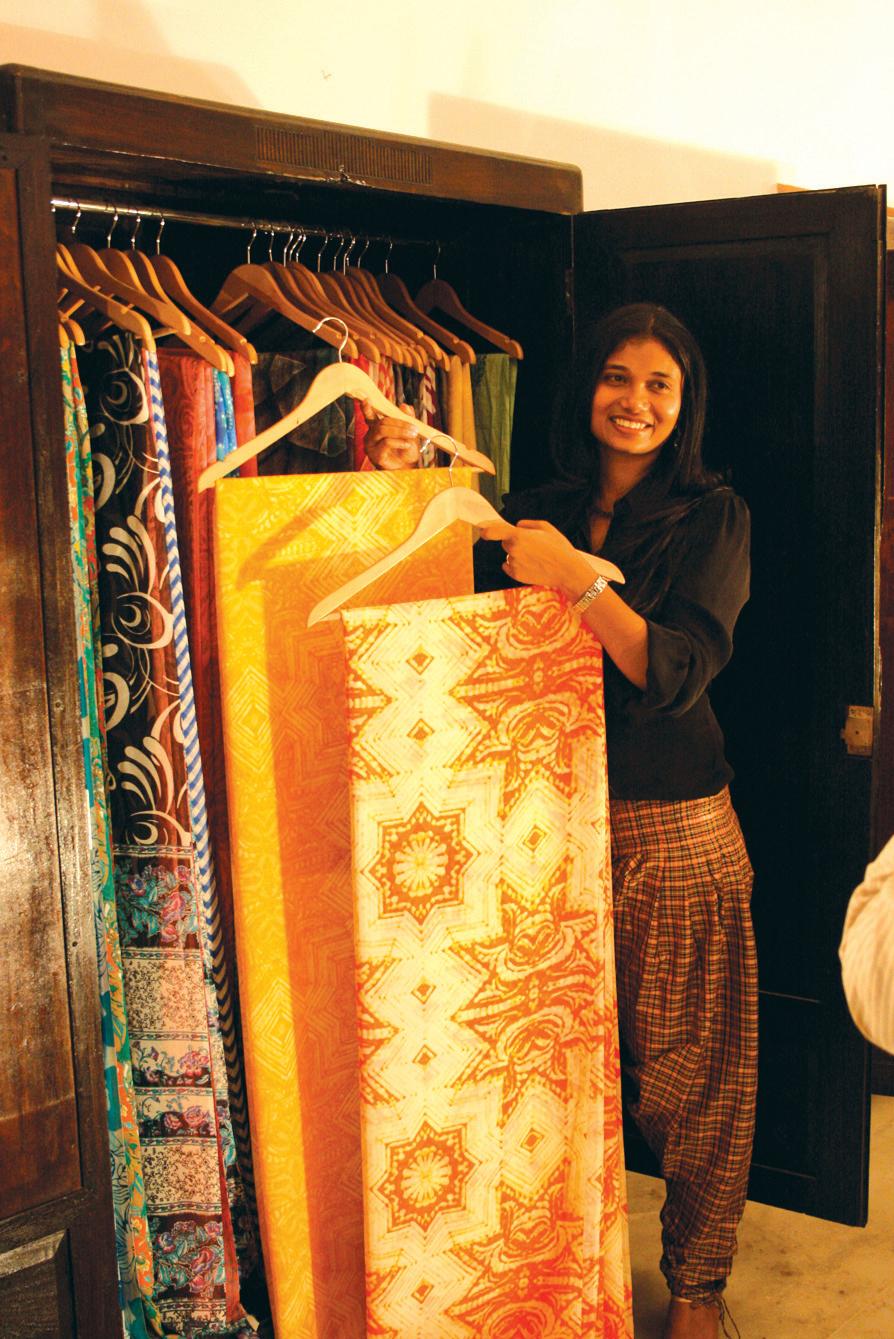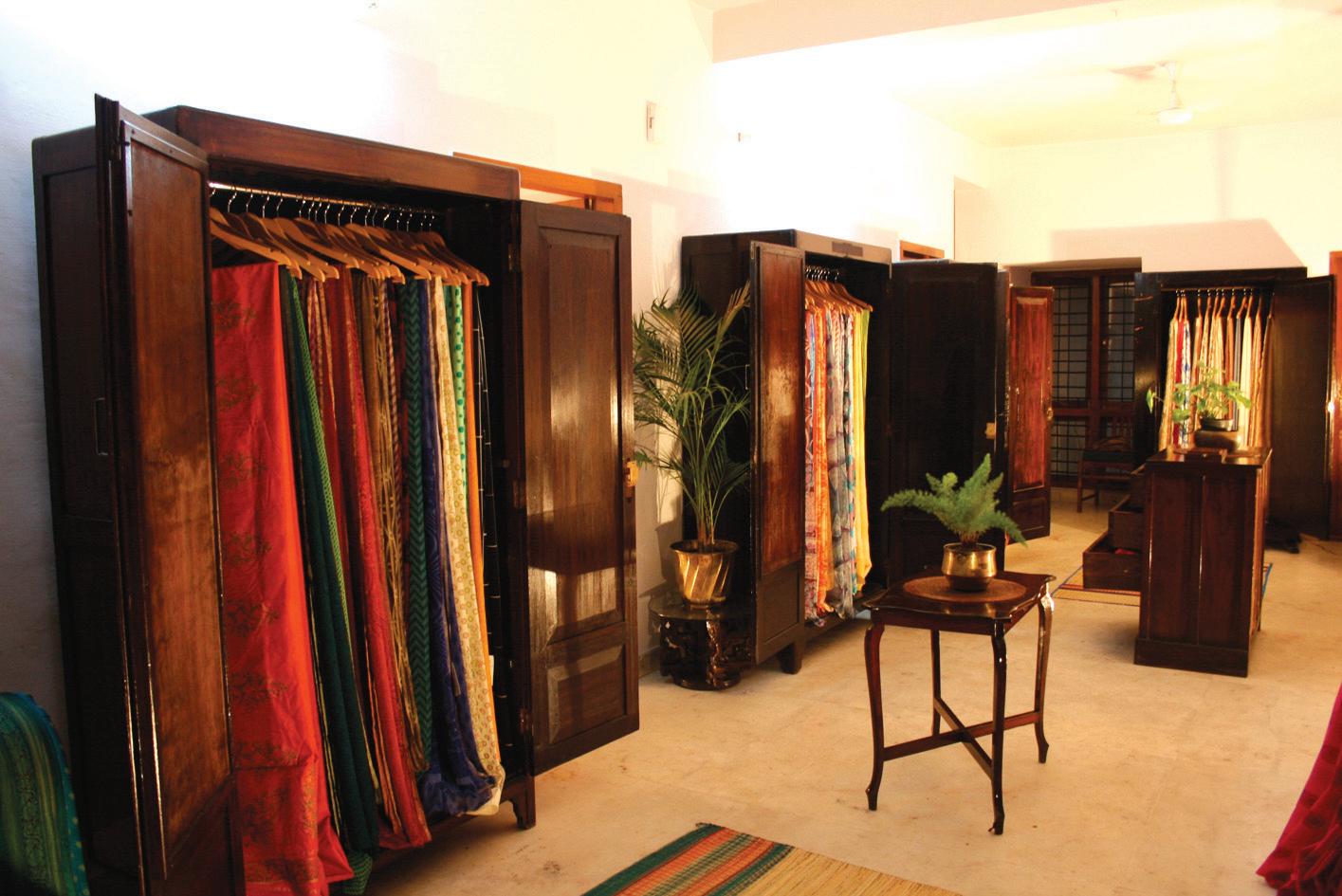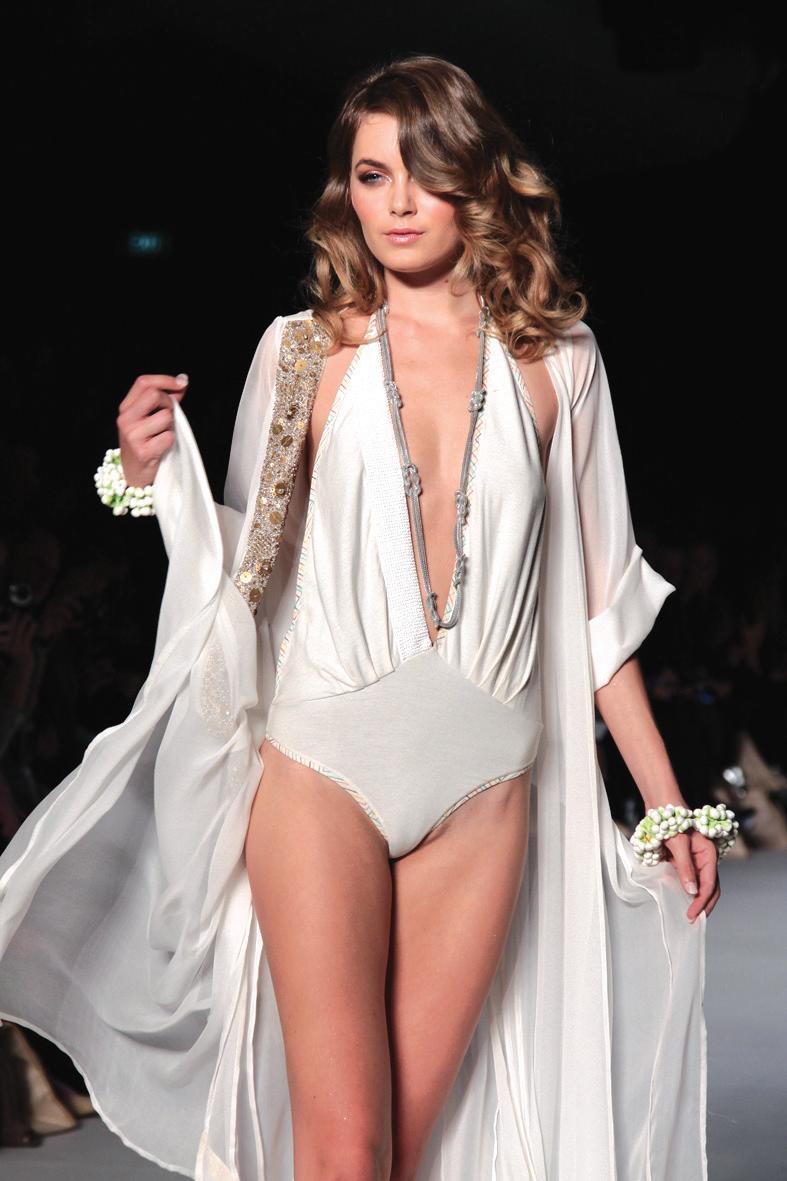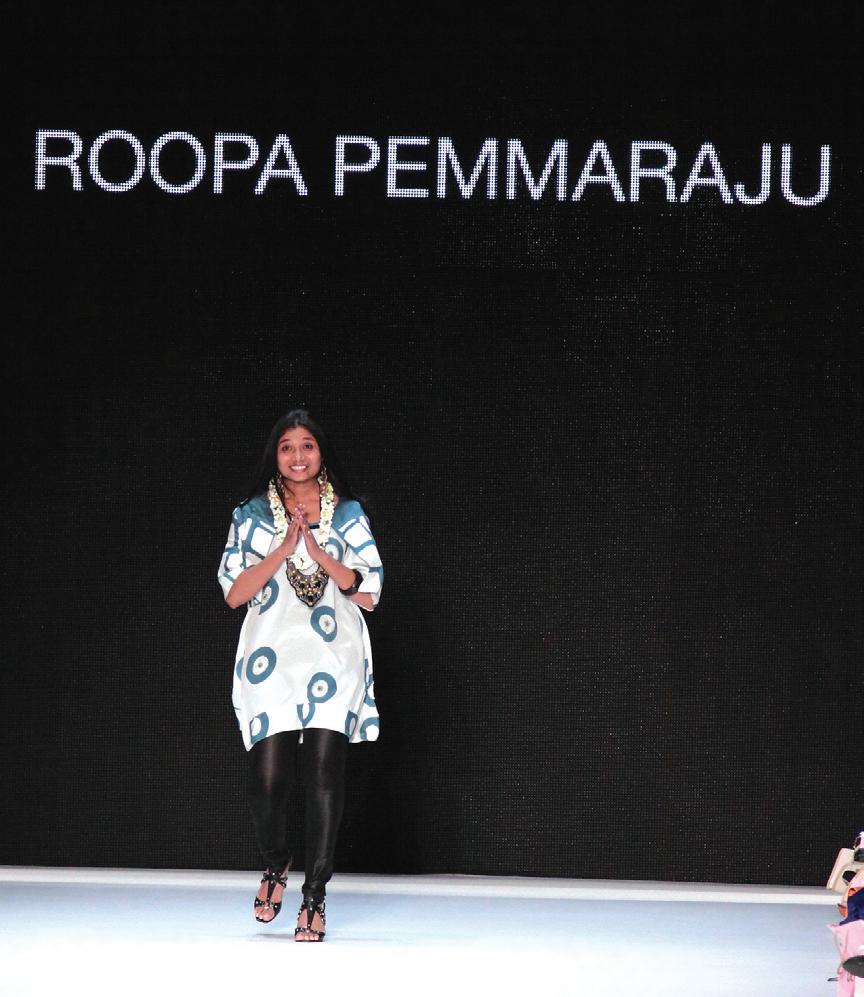
4 minute read
Indian goddesses hit the Aussie runway
from 2010-06 Melbourne
by Indian Link
Roopa
SHIVANGI AMBANI-GANDHI reports
Amongst the other high couture creating all the buzz in Sydney as part of the Rosemount Australian Fashion Week 2010 (RAFW) recently, was one designer collection featuring distinctly embroidered kaftans in luscious silks and georgettes, with names such as Maya (Hindu Goddess of illusion), Ratu Gidul (Javanese Goddess, Queen of the Southern Ocean) and Yemaya (African Goddess of the Sea) The designer of the ‘Beach Goddesses’ resort-wear collection is Roopa Pemmaraju, the only Indian designer to have participated in the prestigious RAFW that concluded on 7 May. Having previously worked with Tommy Hilfiger and India’s Madura Garments, Pemmaraju’s eponymous label is now available at 20 stores in major cities in India and Australia.
Pemmaraju’s very first Australian links go back to the Lakme India Fashion Week 2007 - India’s premier fashion event - when her presentation was executed by none other than the acclaimed Australian celebrity stylist, Kelvin Harries. The talented designer talks to Indian Link about the Indian and Australian inspirations behind her sumptuous collections:
What was your vision for the Beach Goddesses resortwear collection?
Beach Goddesses is based on divinities. I am inspired by their radiance and strength. Adorned in gold, pearls and lavish jewels, goddesses are the epitome of beauty and I want my wearers to feel like goddesses themselves.
Can you tell us more about the RAFW event - did you showcase your works along any themes?
My collection was part of the Swimwear Fashion Runway group show at the Overseas Passenger Terminal at beautiful Circular Quay. Dressed in jasmine flower wreaths, the models glided down the runways to The Beatles song Love you to. I choose this particular song as it features a great sitar riff, which suits the theme of my collection perfectly.
We had a world class sitar player to play at the beginning of my show to set the atmosphere nicely.
What was the response to your collection at the RAFW event?
RAFW was the debut for Beach Goddesses and the first time I have showcased my designs on an Australian runway. I was pleased with how it went. We had a vast amount of media coverage, both locally and internationally and it’s all been positive!
What were some of the inspirations behind this collection?
There are several Hindu Goddesses after whom the pieces are named. However, I also sourced out other inspirational immortal figures such as Japanese
What do you think is the appeal of mythic Indian goddesses to the Australian woman?
In the west, the term ‘goddess’ refers to a beautiful, alluring woman, an attractive prospect for any female. My collection provides that opportunity. In luxurious fabrics and ornate, hand-beaded embellishments, it is hard to not feel divine.
I also believe that these days, there is too much
No, I haven’t had any backlash so I’m thankful! I think it is a step to a more open-minded attitude towards fashion.
What kind of fabrics and dyes have you used in this collection?
My main unique selling points are my fabric, prints and colours. I mostly use silk, georgette, chiffon and cotton. Now because I’m venturing into swimwear those tones into my collection along with splashes of blue and touches of yellow.

What is the appeal of such vibrant Indian colours in a relatively black and white Australian fashion industry?
Although Australian women adore wearing black and white, especially in cities like Melbourne, while on holiday these women choose to wear bright colours to match the holiday atmosphere. My designs fill the niche where there is the need for bright colours,
My resort-wear collection, featuring only lively hues, were designed to be worn lounging in the sun or under the stars on a balmy night.
You have also mentioned that India’s urban cultures and rural villages as your inspiration. Which particular urban and rural areas inspire you and why? Are these the places where you grew up?
I grew up in Bangalore so I am a city girl! But I do travel often to rural areas to source out fabrics and the antiquated but quality craftsmanship that I put forward in my collection.

In my travels, that’s when I get inspired - whether the city of Jaipur or villages in South India.
And what are some key Australian influences in your designs?
Coming from a background that has such a vibrant culture, it is hard not to be influence by it. Therefore I combined the exotic stonework, hand-embroidered pearl and beading and high quality Indian fabric with western silhouettes to produce garments that the Australian woman would wear. Based on my own research and observations, Australian women wear comfortable garments with fluid lines and appreciate simple detailing, which my designs offer.
What brought you to Australia and why did you chose to study at the Royal Melbourne Institute of Technology?
I came with my husband because he got a great job offer here but I took it as an opportunity to enroll for a Masters in RMIT. It’s great studying in RMIT as I learn a different perspective of the Australian fashion industry before I gain enough confidence to

How different was the RAFW experience from the Lakme Fashion Week?


Lakme Fashion Week was entirely different to RAFW. At Lakme you are showing to a home audience - you know their taste and what they like and it was a fantastic response for my first ever runway. RAFW is entirely foreign to me. It was unpredictable and yet I had a good response.
Do you plan to continue to live and work in Australia or India?
I plan to stay here in Australia but I do float between Oz and India often for my studio and my other Indian ethnic apparel line, Calantha Wardrobe. Which stores in Australia stock your collections?
Most of them are in Melbourne and Sydney. We are being approached by several buyers after RAFW so we’ll see how it goes.
Do you have representation internationally elsewhere?
I have stockists in Dubai, US and of course in India.










